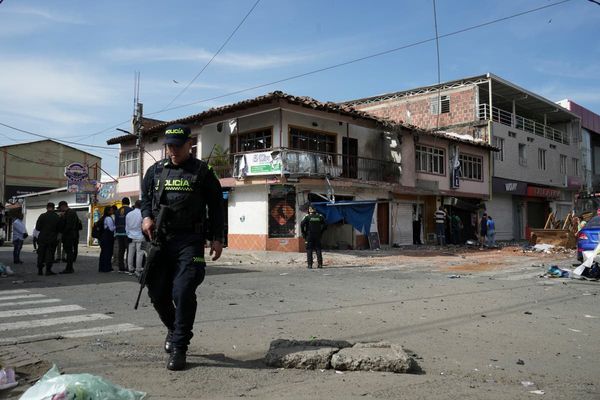Iran's unprecedented attack on Israel over the weekend was likely one of the largest — if not the largest — combined drone-missile barrages ever launched.
Why it matters: Iran's drone and missile salvo, and Israel and its allies' defensive measures, featured a complex array of technologies that cost both countries and their allies billions of dollars over several decades to develop.
What happened during Iran's attack
Iran and its proxies launched more than 300 drones and missiles toward Israel in around five hours.
- A coalition of Israeli, U.S., British, French, Jordanian and Saudi forces intercepted 99% of the launched munitions, many of which were destroyed outside of Israeli airspace, according to the Israel Defense Forces.
- Israeli officials reported that a 7-year-old girl was seriously injured by missile fragments and one of its air bases received slight damage from the attack.
Some analysts believe Iran's mix of drones and missiles was meant to overwhelm Israel's air defense.
- Iran may have meant for the wave of slower drones, which took hours to approach Israel, to exhaust Israel's defense system and leave it vulnerable to the fast cruise and ballistic missiles Iran fired much later in its attack.
Iranian suicide drones
Iran launched over 170 of its Shahed suicide drones, though none of them crossed into Israeli territory, according to the IDF.
- Russia has repeatedly used the same Iranian-made attack drones throughout its invasion of Ukraine, with Moscow launching them to strike both military and civilian targets.
Iran's Shahed-136 is a relatively cheap long-range low-flying propeller drone carrying a small explosive payload.
- The drones, produced in Iran and Russia, are comprised of several simple components originally developed for civilian aircraft.
Case in point: The drones in recent years have been given monikers like "flying moped" or "lawnmower" because of their loud piston engines, which are Iranian copies of model airplane engines.
- Many of the parts that end up in Shahed-136s are produced in the U.S. and Europe, as the components currently aren't subjected to export restrictions.
- Shahed-131s, smaller versions of the Shahed-136, were also likely used in Iran's recent attack.
Iranian missiles
Around 30 cruise missiles and 120 ballistic missiles were also launched. All of the cruise missiles were destroyed before reaching Israel, while a few ballistic missiles crossed into the country, according to the IDF.
- Iran possesses the largest and most diverse missile arsenal in the Middle East, so it's difficult to determine exactly what missile systems were involved.
- Iranian state television said Iran launched Emad long-range ballistic missiles and Paveh cruise missiles in its attack, and defense analysts have also said these weapons or similar variants were likely used.
- Both have similar ranges of around 1,000 miles and can carry several hundred pounds of explosives while traveling at extremely fast speeds.
Israel's missile defense system
To defend against the cruise and ballistic missile barrage, Israel and its allies likely relied on the Arrow and David's Sling missile defense systems and fighter jets.
- Arrow 3, which has been jointly funded, developed and produced by Israel and the U.S., intercepts ballistic missiles as they are flying outside of Earth's atmosphere and destroys them without explosives.
- It's the most sophisticated anti-ballistic missile system in the world and is Israel's longest-range interceptor, serving as the outermost layer of the country's missile defense network.
- Arrow 2, which was also developed with the U.S., engages targets in the upper atmosphere with explosives.
- David's Sling, the middle layer of the defense network co-developed with the U.S., targets short- to medium-range threats like drones, missiles and rockets without explosives.
Israel's Iron Dome
Israel's Iron Dome was designed to destroy short-ranged projectiles — like rockets, missiles and artillery — and serves as the bottom layer of its air defense network.
- It works through a combination of radar to detect incoming threats, batteries that launch interceptor missiles carrying proximity warheads, and communication systems to relay guidance data.
- Given the composition of Iran's recent barrage, Israel likely did not rely on the Iron Dome as much as it has for past short-range rocket attacks by Iran-backed militant groups like Hamas and Hezbollah.
Aircraft and vessels
Israel and its allies also used fighter jets and ships to destroy projectiles.
- Among U.S. forces, the 494th and 335th Fighter Squadrons flying F-15E Strike Eagle aircraft participated, as did U.S. Navy destroyers USS Arleigh Burke and USS Carney.
Go deeper: Scoop: Treasury to green-light new Iran sanctions after Israel attack






